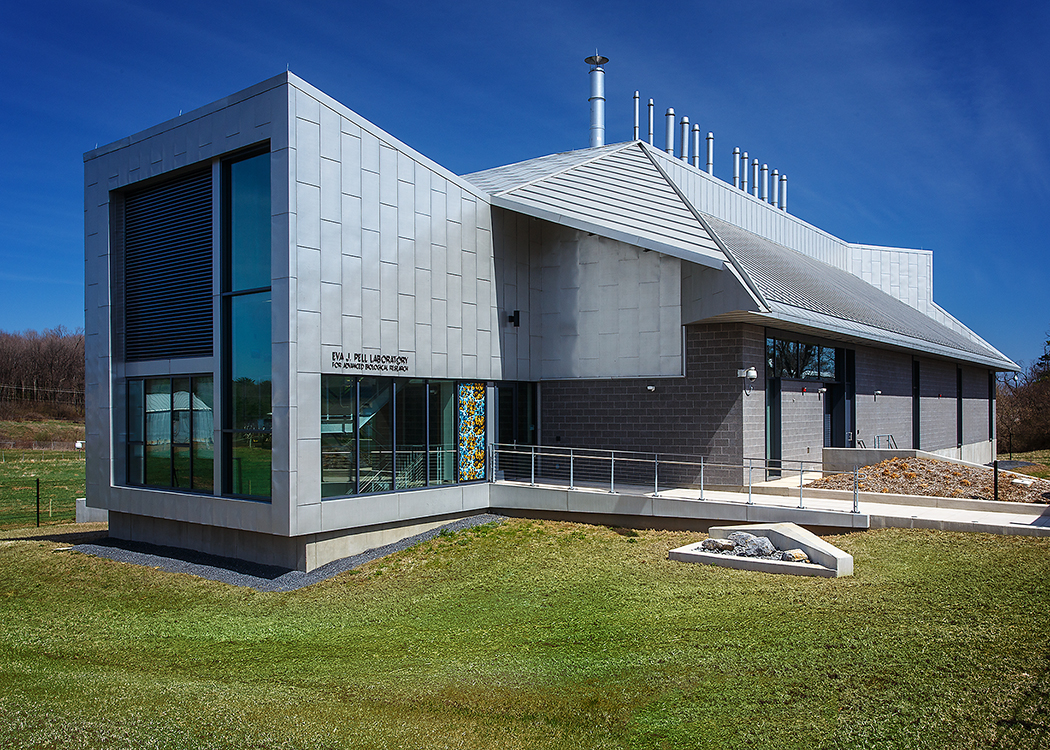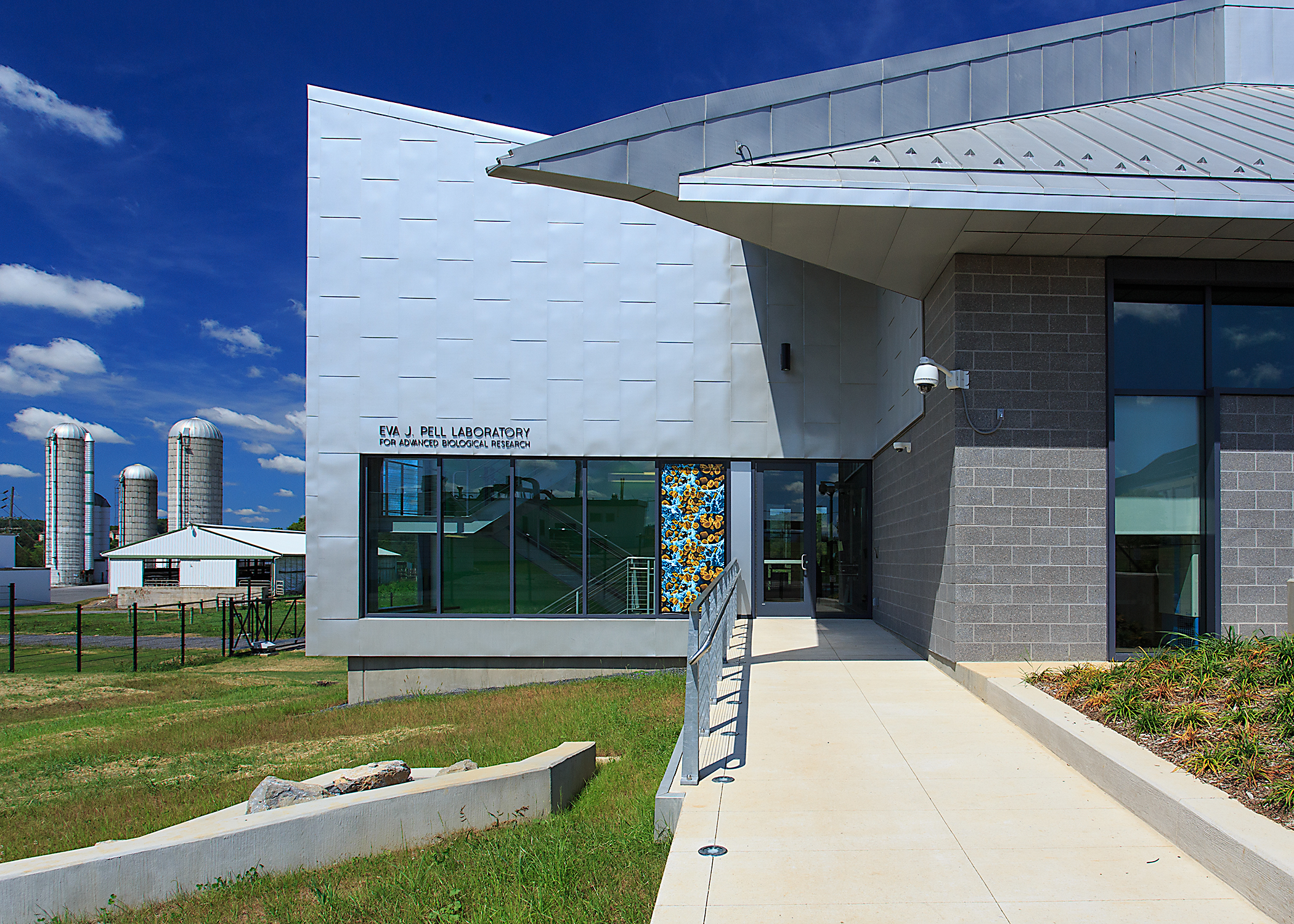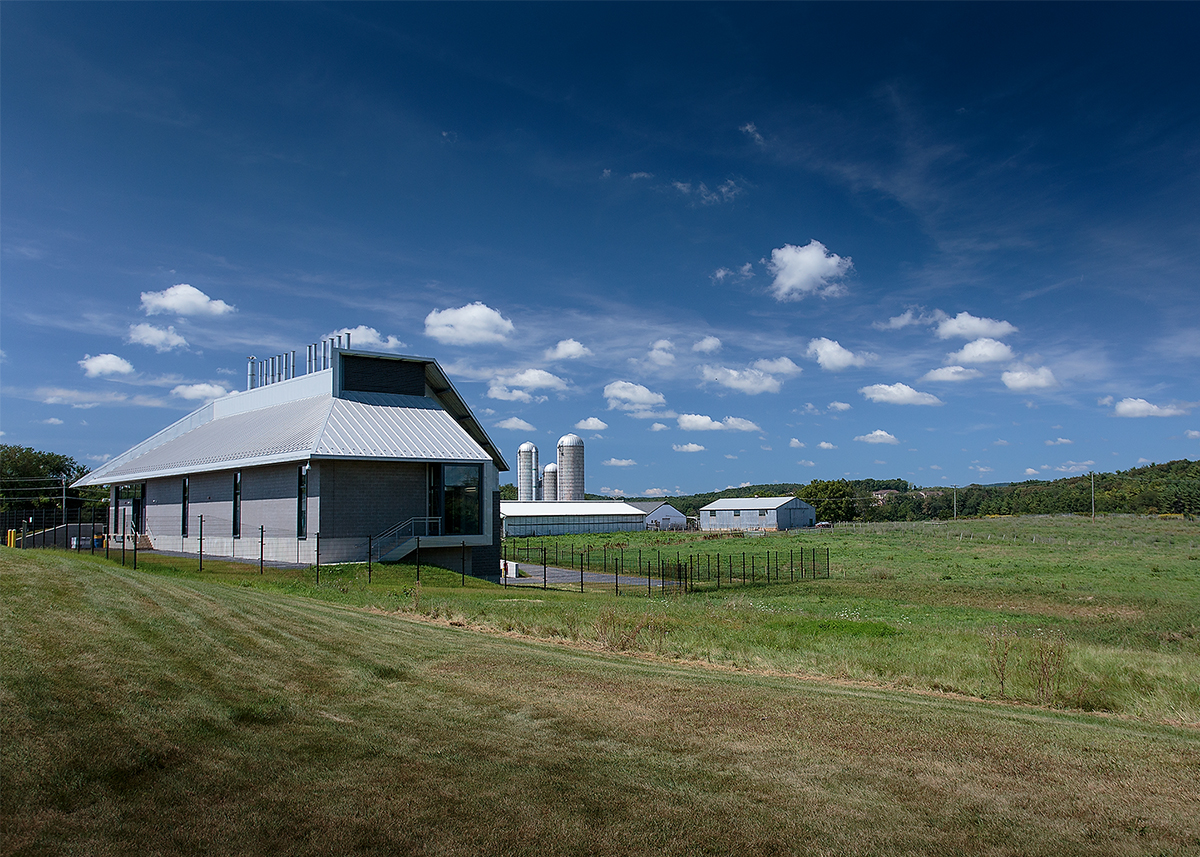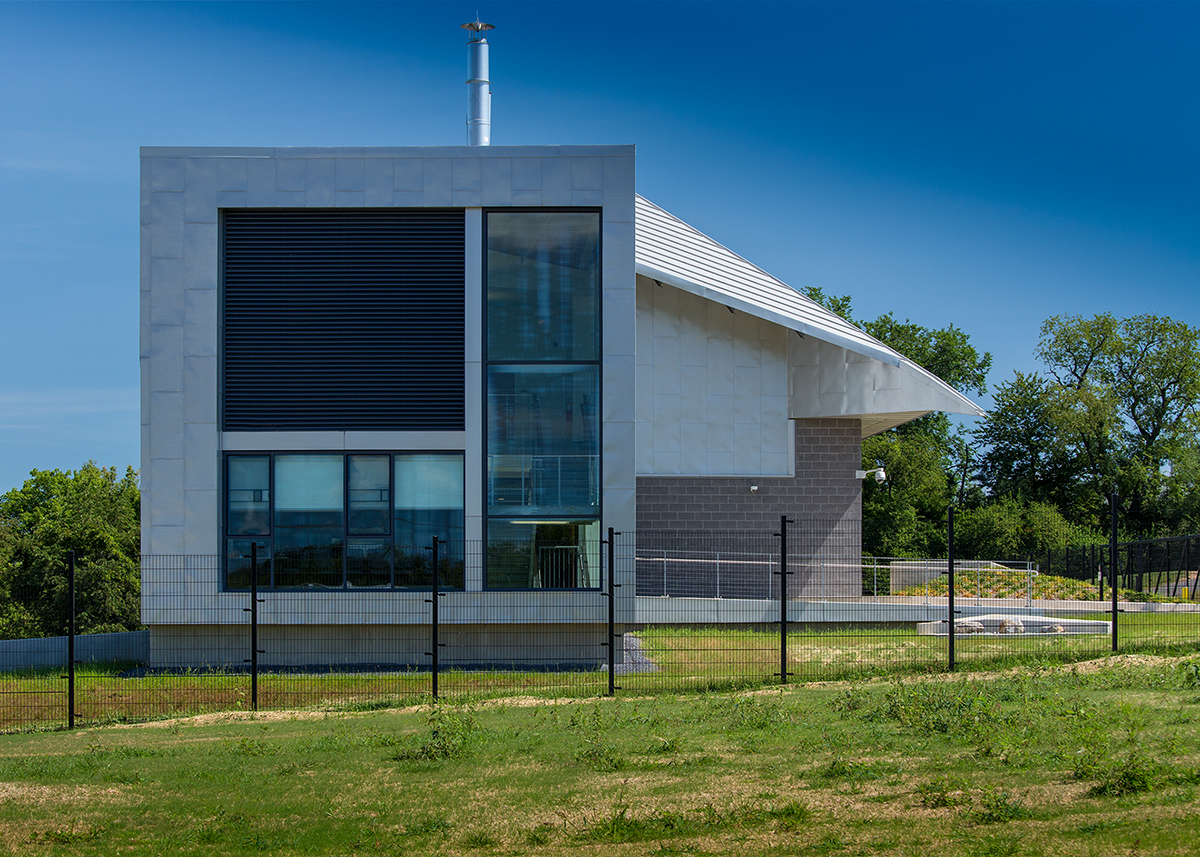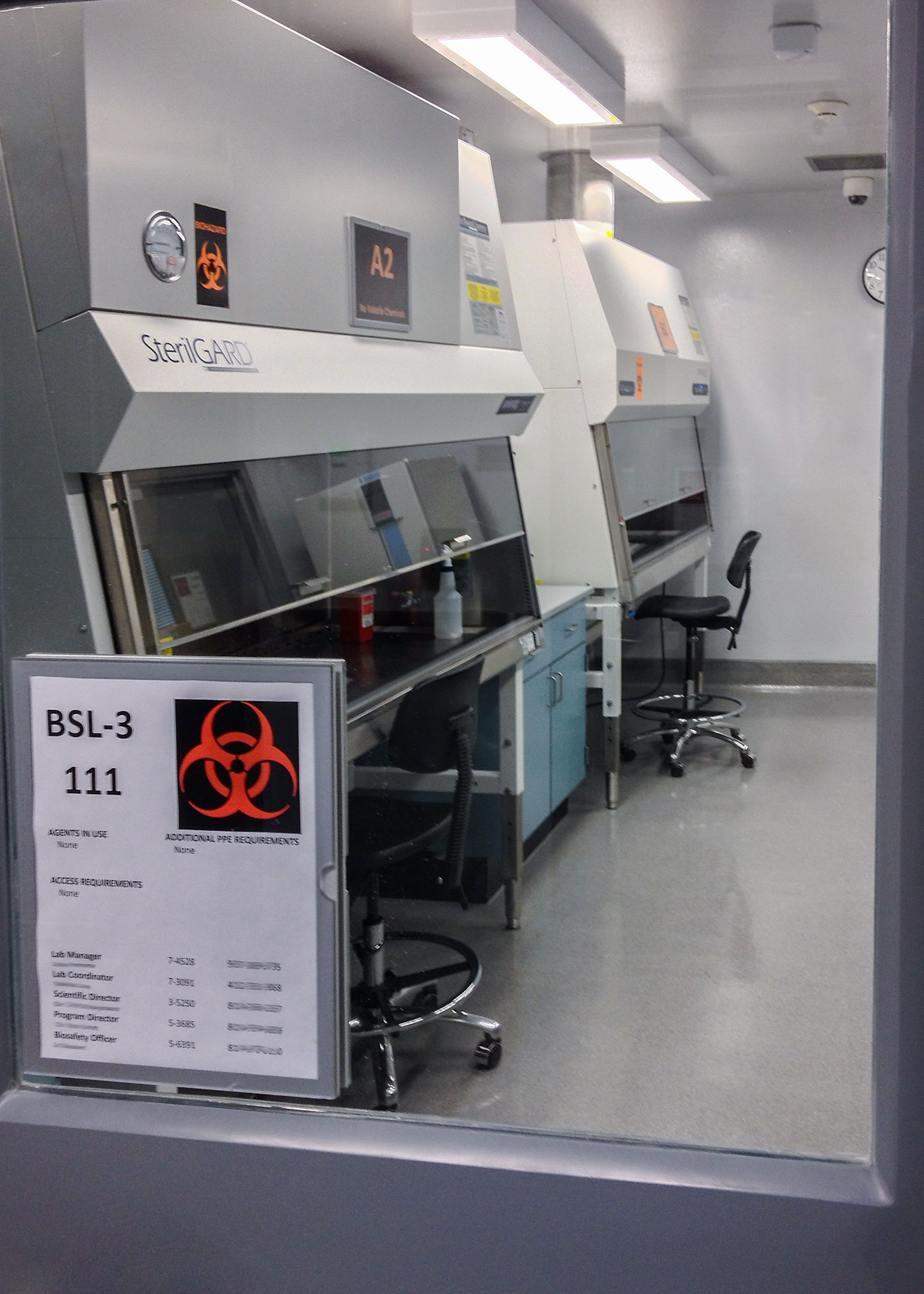array(8) {
["description"]=>
string(3678) "Torcon was construction manager for the Eva J. Pell Laboratory for Advanced Biological Studies at Penn State University’s University Park campus. The new 22,500 sq. ft. building provides high-containment labs to support research for immunology and infectious diseases, including research of insect-transmitted afflictions such as influenza and virus.
Pell Lab won R&D Magazine’s High Honors award in the publication’s annual Laboratory of the Year competition, marking Torcon’s fifth project to be recognized in the program and our second with Payette. The facility also won an Honor Award from the New England chapter of the American Institute of Architects (AIA). The Pell Lab was one of only three projects selected from more than 400 submissions.
The Pell lab is a stand-alone, self-contained facility. The building can accommodate multiple research groups in the 6,500 sq. ft. of high-containment research space, plus provide additional square footage for supporting offices and conference space. The Pell Lab was optimized to provide the maximum amount of high-containment research space, with researchers in the facility having labs (lower containment level) and offices elsewhere on campus.
Sterilization techniques are methodically used to prevent any contaminants exiting or entering the building. Dedicated boilers onsite produce steam, which is then used for the steam-powered autoclaves that sterilize solid waste from the facility. The boilers have two sources of water, which is available exclusively for use by the laboratory. Other items that are brought in or out of the facility must pass through a decontamination chamber which uses vapor hydrogen peroxide for sterilization. Other features include HEPA filters located in each biological safety cabinet, which protect against 99.97% of bacteria and viruses. Epoxy resin floor finishes and impact resistant drywall prevent pathogens from building up in surface imperfections. All surfaces in the lab are smooth and easy to clean while all the exam, procedure and holding rooms are airtight.
Designed by Payette, the sometimes called “Bio-Barn” resembles the traditional style of a barn, while incorporating modern elements of a biocontainment laboratory. The building is divided into two zones, the head house and bio-containment zone. The office space, break and conference rooms located in the head house portion of the lab boast large windows with ample daylight, not typical of BSL labs since all windows must be blast proof. A window on the North end of the facility provides daylight throughout the long corridor of the lab, but it also allows for future expansion of the facility. The bio-containment zone, housing procedure rooms and holding areas, is distinguished by the concrete masonry units making up the façade of the building, capped off with angled metal-paneled roof.
For more information about Pell Lab, check out this story on Tradeline’s website:
http://www.tradelineinc.com/reports/2014-2/eva-j-pell-laboratory-advanced-biological-research
Tradeline has provided information resources to corporate, institutional, and government professionals for the planning, design, construction, and management of facility assets for more than thirty years. In addition to providing an on-line portal with information, news, and project data, Tradeline produces industry-leading conferences.
Additional information can be found by clicking here.
"
["details"]=>
array(3) {
["location"]=>
string(17) "State College, PA"
["architect"]=>
string(7) "Payette"
["key_facts"]=>
array(5) {
[0]=>
array(1) {
["text"]=>
string(23) "Construction Management"
}
[1]=>
array(1) {
["text"]=>
string(15) "22,500 sq. ft. "
}
[2]=>
array(1) {
["text"]=>
string(21) "High-containment labs"
}
[3]=>
array(1) {
["text"]=>
string(43) "R&D Magazine Lab of the Year (High Honors) "
}
[4]=>
array(1) {
["text"]=>
string(28) "AIA New England, Honor Award"
}
}
}
["featured_image"]=>
int(960)
["full_width_images"]=>
array(1) {
[0]=>
int(960)
}
["left_column_images"]=>
array(2) {
[0]=>
int(959)
[1]=>
int(958)
}
["right_column_images"]=>
array(2) {
[0]=>
int(957)
[1]=>
int(956)
}
["short_description"]=>
string(0) ""
["client"]=>
string(21) "Penn State University"
}
Eva J. Pell Laboratory for Advanced Biological Studies
Torcon was construction manager for the Eva J. Pell Laboratory for Advanced Biological Studies at Penn State University’s University Park campus. The new 22,500 sq. ft. building provides high-containment labs to support research for immunology and infectious diseases, including research of insect-transmitted afflictions such as influenza and virus.
Pell Lab won R&D Magazine’s High Honors award in the publication’s annual Laboratory of the Year competition, marking Torcon’s fifth project to be recognized in the program and our second with Payette. The facility also won an Honor Award from the New England chapter of the American Institute of Architects (AIA). The Pell Lab was one of only three projects selected from more than 400 submissions.
The Pell lab is a stand-alone, self-contained facility. The building can accommodate multiple research groups in the 6,500 sq. ft. of high-containment research space, plus provide additional square footage for supporting offices and conference space. The Pell Lab was optimized to provide the maximum amount of high-containment research space, with researchers in the facility having labs (lower containment level) and offices elsewhere on campus.
Sterilization techniques are methodically used to prevent any contaminants exiting or entering the building. Dedicated boilers onsite produce steam, which is then used for the steam-powered autoclaves that sterilize solid waste from the facility. The boilers have two sources of water, which is available exclusively for use by the laboratory. Other items that are brought in or out of the facility must pass through a decontamination chamber which uses vapor hydrogen peroxide for sterilization. Other features include HEPA filters located in each biological safety cabinet, which protect against 99.97% of bacteria and viruses. Epoxy resin floor finishes and impact resistant drywall prevent pathogens from building up in surface imperfections. All surfaces in the lab are smooth and easy to clean while all the exam, procedure and holding rooms are airtight.
Designed by Payette, the sometimes called “Bio-Barn” resembles the traditional style of a barn, while incorporating modern elements of a biocontainment laboratory. The building is divided into two zones, the head house and bio-containment zone. The office space, break and conference rooms located in the head house portion of the lab boast large windows with ample daylight, not typical of BSL labs since all windows must be blast proof. A window on the North end of the facility provides daylight throughout the long corridor of the lab, but it also allows for future expansion of the facility. The bio-containment zone, housing procedure rooms and holding areas, is distinguished by the concrete masonry units making up the façade of the building, capped off with angled metal-paneled roof.
For more information about Pell Lab, check out this story on Tradeline’s website:
http://www.tradelineinc.com/reports/2014-2/eva-j-pell-laboratory-advanced-biological-research
Tradeline has provided information resources to corporate, institutional, and government professionals for the planning, design, construction, and management of facility assets for more than thirty years. In addition to providing an on-line portal with information, news, and project data, Tradeline produces industry-leading conferences.
Additional information can be found by clicking here.
Project Details
